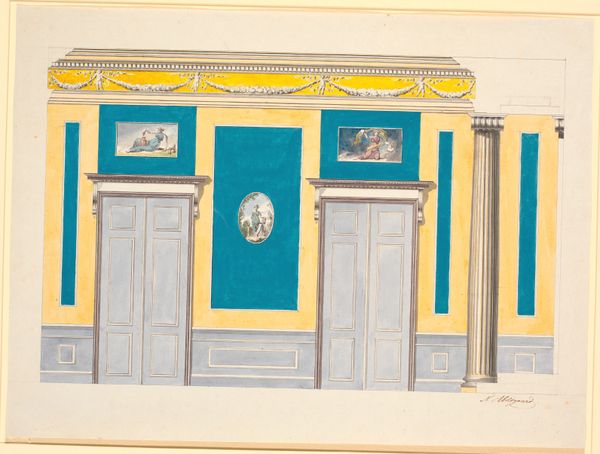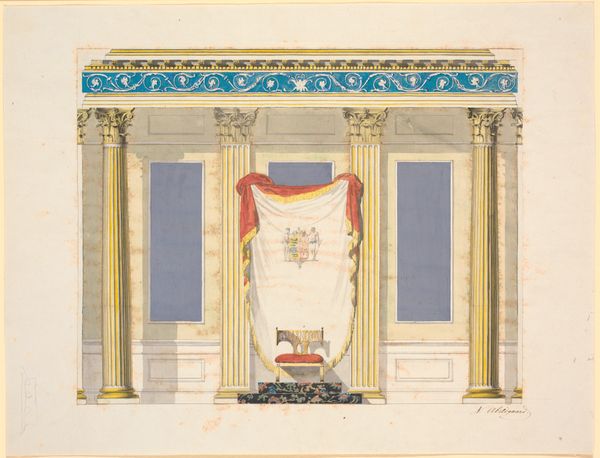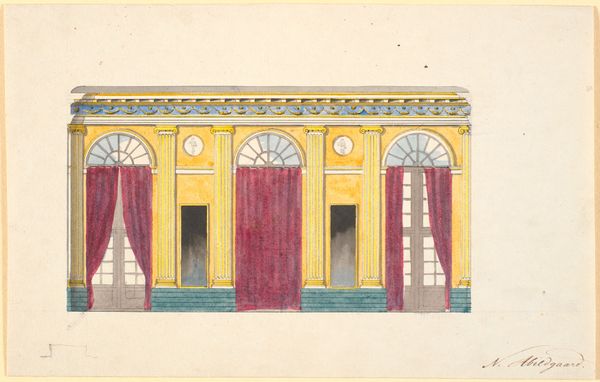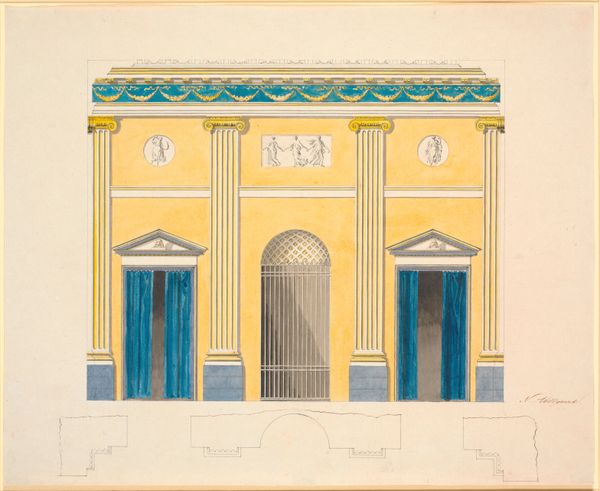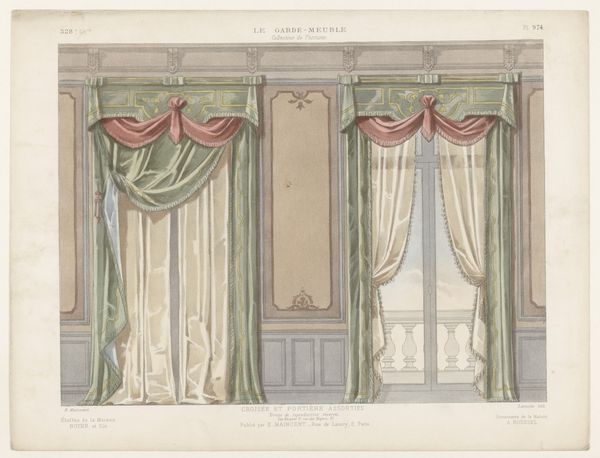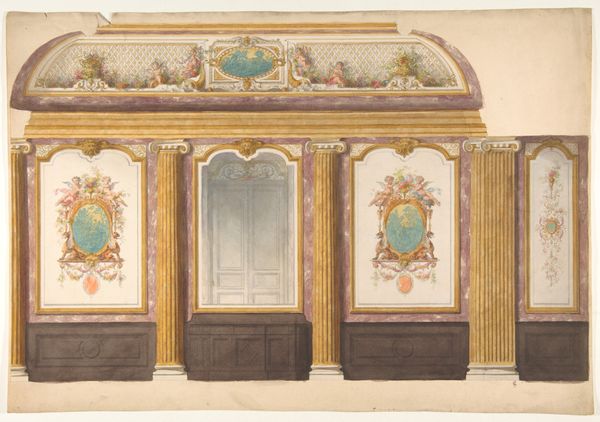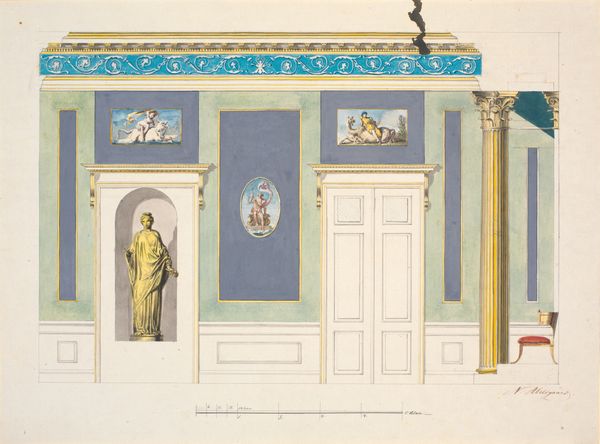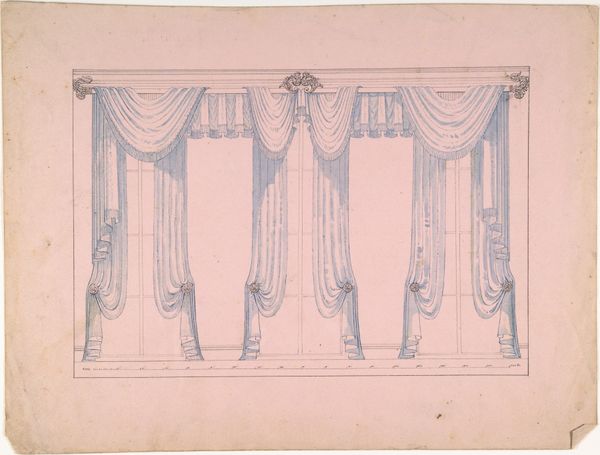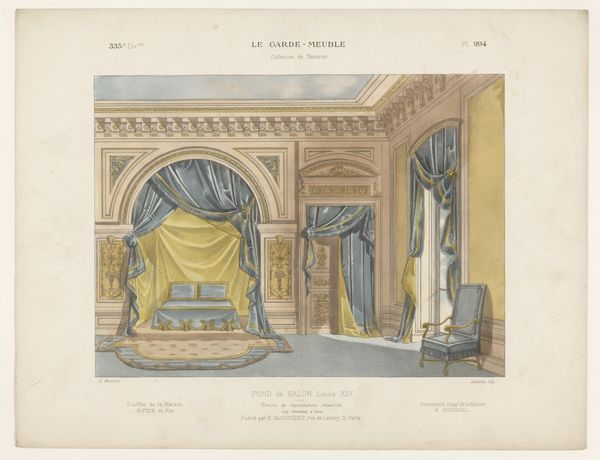
Vinduesvæggen. Udkast til dekoration til Riddersalen 1790s
0:00
0:00
drawing, watercolor, pencil, architecture
#
drawing
#
neoclacissism
#
interior photography design
#
historic architecture
#
traditional architecture
#
watercolor
#
pencil
#
history-painting
#
architecture
Dimensions: 410 mm (height) x 573 mm (width) (bladmaal)
Editor: So, this is "Vinduesvæggen. Udkast til dekoration til Riddersalen," a watercolor and pencil drawing from the 1790s by Nicolai Abildgaard. It’s a design for a room, I guess? I’m immediately struck by how… theatrical it feels. All those columns and drapes, almost like a stage set. What do you see in this piece? Curator: Theatre is an excellent observation. Abildgaard's Neoclassical style pulls heavily from antiquity, and for that era, classical architecture wasn’t just about aesthetics. Think about the Roman Senate, or Greek amphitheatres—architecture embodied power and civic virtue. These weren't just backdrops; the symbols invoked a very specific emotional and intellectual response. Do you see any repeating motifs? Editor: Yes, the columns, obviously, and the swags at the top. And these circular medallions with figures inside. Curator: Exactly. The columns, the medallions, the friezes...they speak of order, reason, and a connection to a glorious past. It's more than decoration; it's about creating a space imbued with a particular cultural memory, a feeling. The curtain further hints that this is not just an empty performance but also something very real, just behind those blue curtains. Editor: So it's like a stage, but a stage meant to inspire certain feelings and ideas in the people experiencing the space? It almost feels a bit manipulative, knowing that. Curator: Manipulation may be a strong word. How about intentional cultural placemaking? The goal isn't simply to impress but to connect the present with a lineage, lending legitimacy and gravity to those within the space. Do those associations and ideas change over time, though? Editor: That's fascinating! I hadn’t considered the active role architecture plays in shaping our understanding of the world and in the past. It feels like this room is a monument as much as it is just a room. Curator: Indeed! And understanding the visual vocabulary of a time reveals so much about its aspirations. I think my eyes were truly opened to a unique form of historical perspective.
Comments
No comments
Be the first to comment and join the conversation on the ultimate creative platform.

